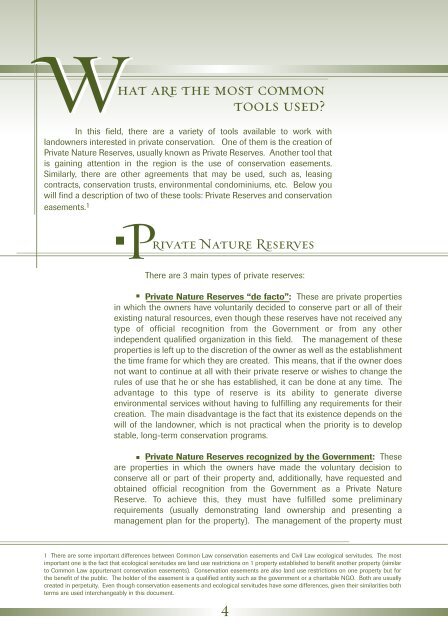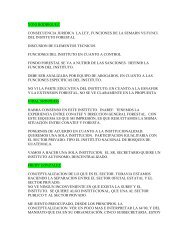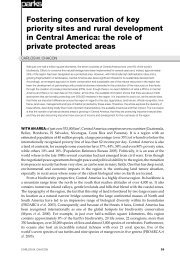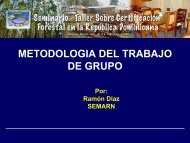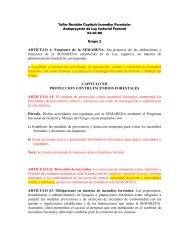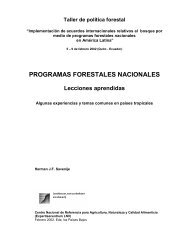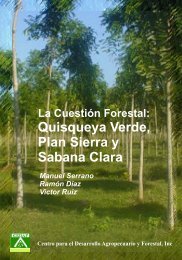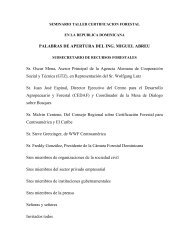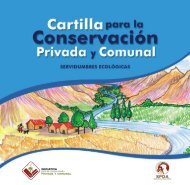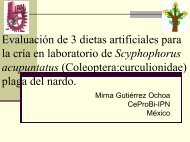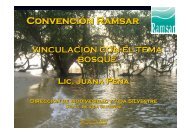Desarrollando Developing - CEDAF
Desarrollando Developing - CEDAF
Desarrollando Developing - CEDAF
You also want an ePaper? Increase the reach of your titles
YUMPU automatically turns print PDFs into web optimized ePapers that Google loves.
hat are the most commontools used? WIn this field, there are a variety of tools available to work withlandowners interested in private conservation. One of them is the creation ofPrivate Nature Reserves, usually known as Private Reserves. Another tool thatis gaining attention in the region is the use of conservation easements.Similarly, there are other agreements that may be used, such as, leasingcontracts, conservation trusts, environmental condominiums, etc. Below youwill find a description of two of these tools: Private Reserves and conservationeasements. 1Private Nature ReservesThere are 3 main types of private reserves:Private Nature Reserves “de facto”: These are private propertiesin which the owners have voluntarily decided to conserve part or all of theirexisting natural resources, even though these reserves have not received anytype of official recognition from the Government or from any otherindependent qualified organization in this field. The management of theseproperties is left up to the discretion of the owner as well as the establishmentthe time frame for which they are created. This means, that if the owner doesnot want to continue at all with their private reserve or wishes to change therules of use that he or she has established, it can be done at any time. Theadvantage to this type of reserve is its ability to generate diverseenvironmental services without having to fulfilling any requirements for theircreation. The main disadvantage is the fact that its existence depends on thewill of the landowner, which is not practical when the priority is to developstable, long-term conservation programs.Private Nature Reserves recognized by the Government: Theseare properties in which the owners have made the voluntary decision toconserve all or part of their property and, additionally, have requested andobtained official recognition from the Government as a Private NatureReserve. To achieve this, they must have fulfilled some preliminaryrequirements (usually demonstrating land ownership and presenting amanagement plan for the property). The management of the property must1 There are some important differences between Common Law conservation easements and Civil Law ecological servitudes. The mostimportant one is the fact that ecological servitudes are land use restrictions on 1 property established to benefit another property (similarto Common Law appurtenant conservation easements). Conservation easements are also land use restrictions on one property but forthe benefit of the public. The holder of the easement is a qualified entity such as the government or a charitable NGO. Both are usuallycreated in perpetuity. Even though conservation easements and ecological servitudes have some differences, given their similarities bothterms are used interchangeably in this document.4


